Figure 1. Milk tea was offered in so many occasions throughout our visit to Mongolia.
White Foods
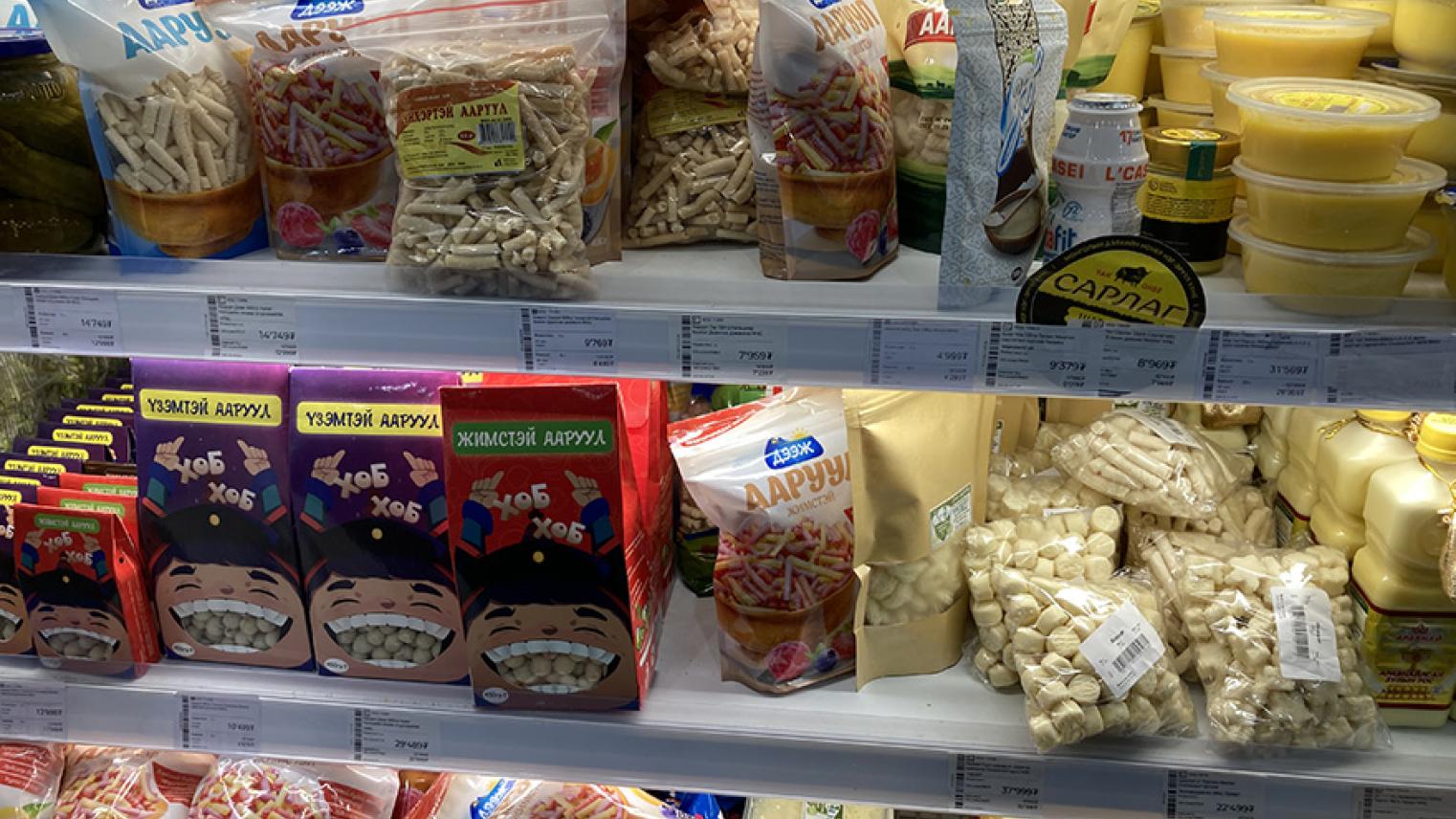
By Hana Mori, student on in-country field course: Modern Mongolia: challenges to the environment, economy and empire
Cheese, yogurt, ice cream – if someone were to ask me what my favorite foods are, dairy products would certainly dominate my list. On the fourth day of a two-week in-country field course, Modern Mongolia, we visited a local family that warmly hosted us with an array of Mongolian foods. Here, I was fascinated by the diverse Mongolian dairy products which I had never seen before! Perhaps surprisingly, considering the dominant perception of Mongolian nomads as primarily meat-consumers, dairy products have always had a significant presence in the Mongolian diet. Harsh environmental conditions and unique nomadic lifeways led to the development of diverse dairy products in Mongolia. The Mongolian diet was seasonal: “red foods” – meat – consumed in winter; “white foods” – dairy products – were consumed during summer. Enjoyed fresh in the summer, white foods were also dried and kept in stock for the winter. Dairy products were generally consumed more than meat due to the limited number of livestock that can be slaughtered .
Besides having been the nearly exclusive source of nutrition during summer, white foods also hold cultural and social significance within Mongolian society. White foods and the color white have traditionally been associated with renewal, prosperity, and happiness, as its abundance signal the wealth of the herd. People in Mongolia hence celebrate the end of the harsh winter on the first day of the “White Month” – first month of the lunar calendar – with a feast of white foods, dried or frozen at the end of autumn in the previous year especially for this occasion. White foods are also cherished today as symbols of purity, maternalism and nomadic heritage. According to Thrift, Mongolian industrial dairy producers exploit this discourse of purity to present their products as “pure” and “natural” compared to “artificial” or even “poisonous” foreign products. I certainly did recognize the sense of pride people instill in the significance of “white foods” made in Mongolia. Based on what I have heard and observed, I will briefly introduce some of the white foods I encountered and discuss their historic and contemporary values in Mongolia.
Milk Tea
Milk tea is made from bricks of tea, cow, sheep, goat or camel milk, water and salt. Butter, cream, rice, jerky or herbs may also be added. To me, the scent and flavor of tea tasted weaker compared to other milk teas, and it had a rather savory taste, perhaps due to the added salt. Milk tea has been vital to every meal in Mongolia and is served when anyone visits a Mongolian yurt (ger) as a demonstration of hospitality. In turn, tea served without milk implied poverty and bad luck, although this may be a necessity in the cold season when animals are no longer milked. The popularity of this beverage amongst Mongolians was evident – milk tea was always on the menu at restaurants, including instant packets sold at supermarkets, and it was even available to be served hot at beverage machines in convenience stores.
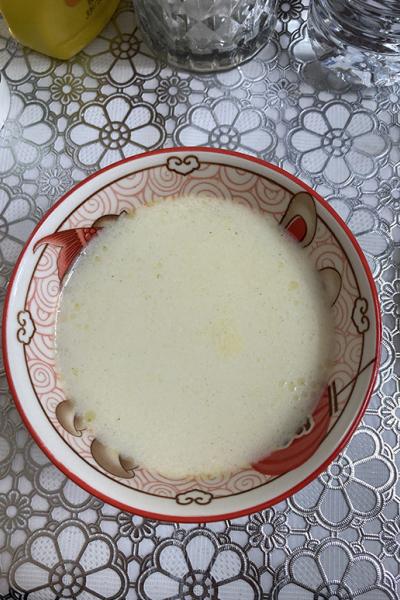
Airag
Airag is fermented mare’s milk with an alcohol content of approximately 2.0%. Served cold and sour in taste, it makes a refreshing drink, perfect during the summer. Airag is valued summer beverage reserved for during Naadam , a nation-wide festival revolving around the three traditional games of wrestling, archery, and horse racing, celebrated from July 11th to 13th each year. Together with Naadam, airag serves as a marker of Mongolian national identity closely associated with the image of Chinggis Khaan. Drinking airag is a collective experience – A big bowl of airag gets passed around for each person to take one sip in turns. Airag is also believed to have significant nutritional and medicinal value, as it is rich in vitamins and probiotics, while the drink contains antibiotic properties produced from the fermentation process. Besides, fermentation makes airag lactose-free and thus is easily digestible for people with lactose intolerance.
Figure 2. Airag I tried at the local Naadam at Karakorum. The bowl was passed around for everyone to have a sip.
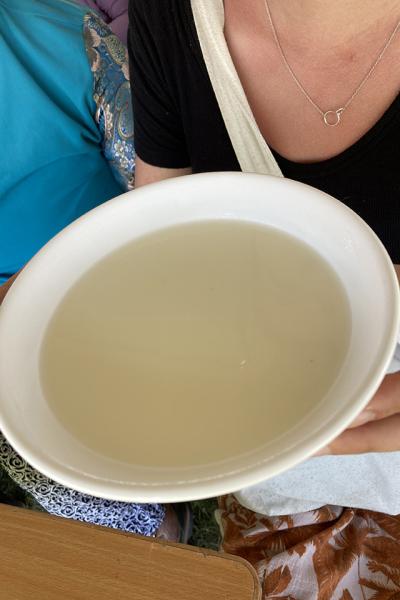
Uurag
Literally meaning “protein”, uurag is a special white food rich in proteins and antibodies. It is made from the first milk, or colostrum, released by mammary glands to assist a newborn, making it only available once a year from spring to early summer when the young herd animals are born. Its texture and taste are like somewhat like tofu: soft, silky and bland in flavour.
Figure 3. Uurag offered when we visited a local family in the outskirts of Ulaanbaatar.
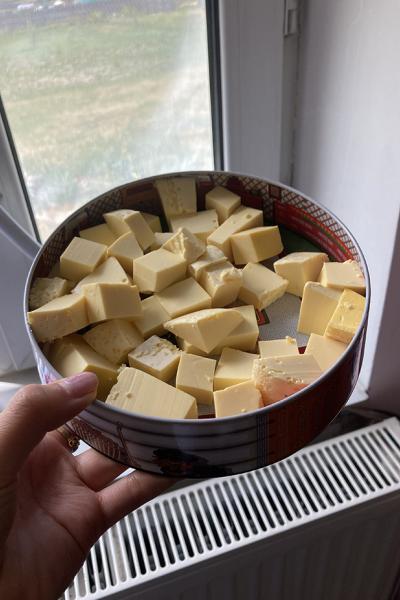
Urum and Aarts
Urum, or Orom, is a type of clotted cream. For breakfast, the thickened cream may be added to the salty milk tea and consumed with fried dough (boortsog) or used instead of butter on bread. For the dish in the photo, our host mixed orom with aarts, a type of dried curd made from sour milk. The spread had a light and creamy texture, like cottage cheese or ricotta, but sweeter in taste through the addition of sugar.
Figure 4. Urum mixed with aarts, offered by the local family.
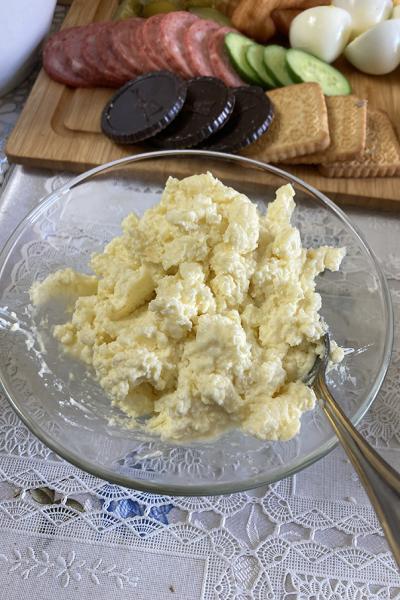
Aaruul
Aaruul is a type of dried curd regularly eaten in Mongolia. This snack may be made from the milk or yoghurt of any livestock. The curd is dried by putting it out in the sun on the sloping roof of the ger and then formed into various shapes. They have different tastes and textures depending on the type of milk/yogurt and species of herd animal used, but most are made from yoghurt derived from Mongol cows or yaks. Sugar and vanilla may be added for a sweeter flavor. After it has been dried and become solid, aaruul can then be stored for long periods of time and has always been cherished as a portable and nutritious snack, as part of the nomadic way of life. Every person who I asked, proudly attributed aaruul to strong teeth amongst Mongolians; packaging of aaruul sold in stores showed a picture of a child smiling with mouth wide open exposing shining white teeth.
Figure 5. Handmade aarul offered by a local family. Each shape was different in texture – some were more firm and chewy, while others were soft and crumbly.
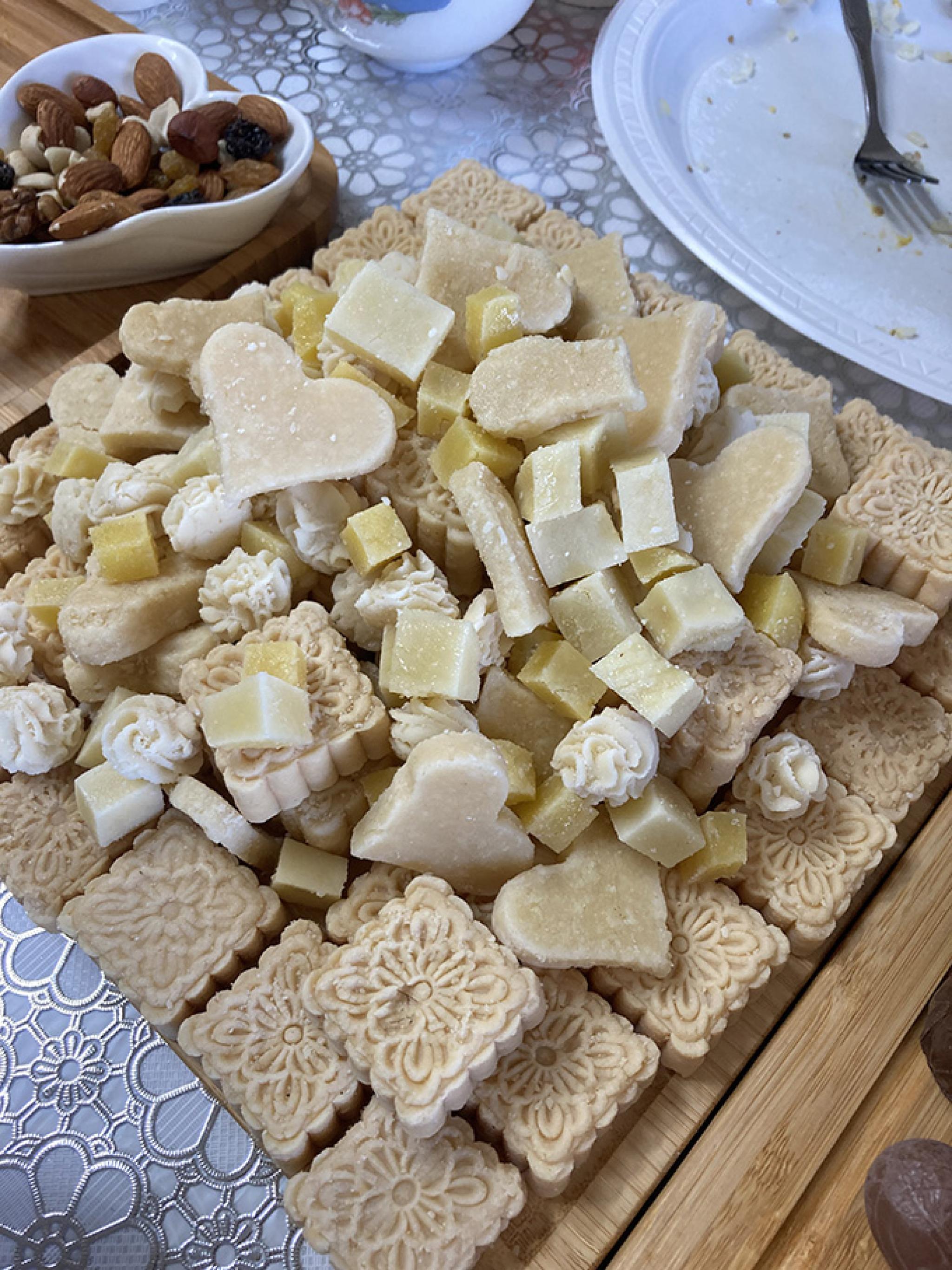
Figure 6.Another handmade aarul offered when we visited the Mongolian Traditional Medicine Museum. These were more soft, crumbly and sweet.
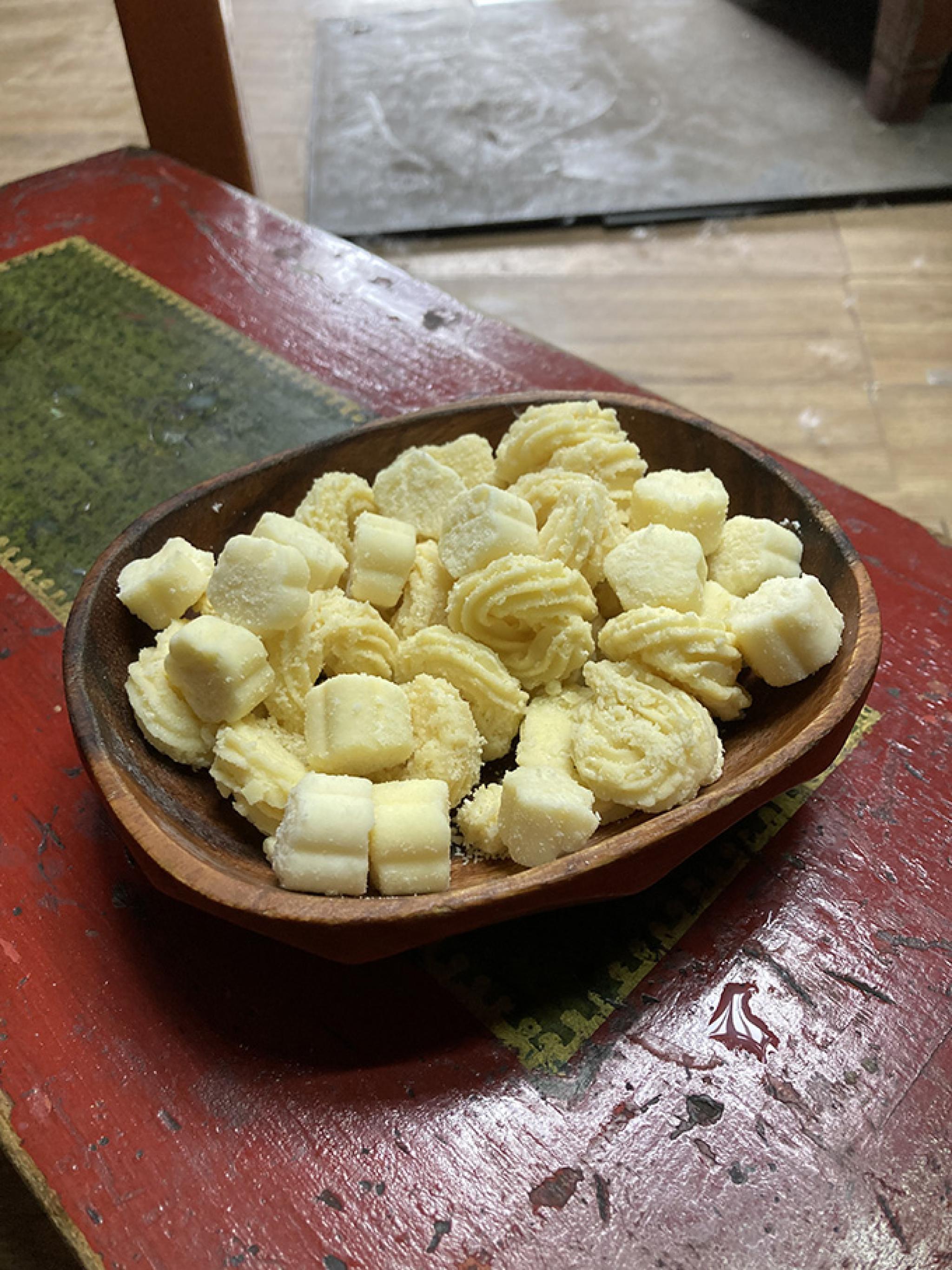
Globalisation and Changing Foodways
Mongolian foodways has been changing in recent years alongside Mongolia’s increasing reliance on the global market economy. On my first day in Mongolia, I was surprised by the variety of cuisines represented by the many restaurants across the streets of Ulaanbaatar, while supermarkets and convenience stores sell products from around the globe. Research indicated that while seasonal food consumption continues in rural areas, urban residents are following the trend of reduced dairy intake and higher consumption of meat (both red and processed), as well as ‘non-traditional’ food sources, such as vegetables and refined grains.
Figure 7. Selection of aaruul on display at a local supermarket in Ulaanbaatar.

Nevertheless, from my visit I observed that white foods continue to assume a significant presence in Mongolian diet and culture. Tanks of airag and plates piled with aaruul were everywhere at the local naadam festival at Kharkhorin, the ancient capital in Arkhangai Province. I also encountered crowds of Mongolian families celebrating graduation at Sukhbaatar square, where some people were sprinkling airag into the air – a Mongolian traditional ritual of offering the first share of milk to the spirits and the heavens. White foods are also still present in the everyday life of urban Mongolia. In the supermarkets and convenience stores of Ulaanbaatar, Mongolian brands of white foods like aaruul and camel milk are always in stock. One of the foods that I most enjoyed in Mongolia was the machine-served warm milk tea from Nice to CU, a South Korean convenience store chain. While the industrial production of such white foods shows a shift from traditional forms of processing and making dairy products, this also implies a consistently high demand for white foods continuing in contemporary Mongolia.